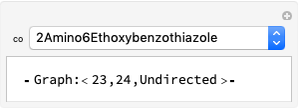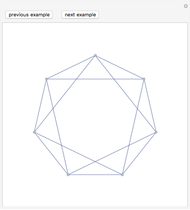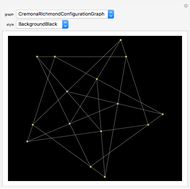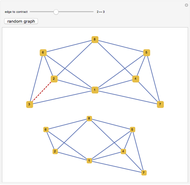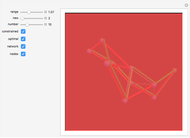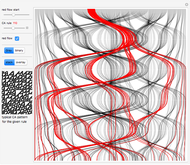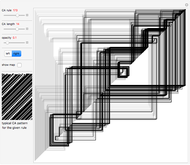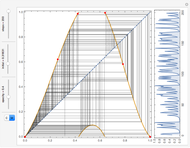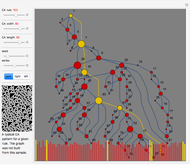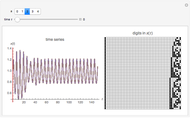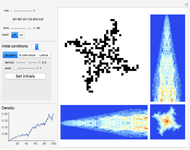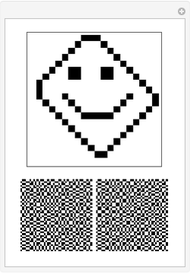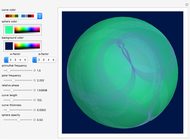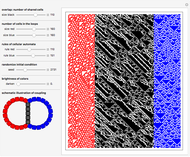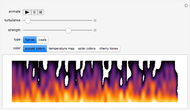Horizontal Visibility Graphs for Elementary Cellular Automata

Requires a Wolfram Notebook System
Interact on desktop, mobile and cloud with the free Wolfram Player or other Wolfram Language products.
A time series can be formed from an evolution of a finite elementary cellular automaton (ECA). This can be done in a few different ways. We can consider every step of an ECA evolution to be a binary number and calculate its decimal form by counting digits from left to right or in reverse. We also could just sum the digits. These operations are reflected correspondingly in the control buttons "left," "right," and "sum."
[more]
Contributed by: Vitaliy Kaurov (February 2013)
Open content licensed under CC BY-NC-SA
Snapshots
Details
There are various mappings from time series to visibility graphs. HVG is one of the simplest algorithms. Some more elaborate schemes claim a partial inverse operation. The main idea behind these mappings is their ability to apply time series and signal processing tools to graphs and metrics of graphs to time series. This may lead to discoveries of new relationships and a better understanding of old ones.
References
[1] A. S. L. O. Campanharo, M. I. Sirer, R. D. Malmgren, F. M. Ramos, and L. A. N. Amara, "Duality between Time Series and Networks," PLoS One, 6(8), 2011 e23378. www.ncbi.nlm.nih.gov/pmc/articles/PMC3154932.
[2] L. Lacasa, B. Luque, F. Ballesteros, J. Luque, J. C. Nuño, "From Time Series to Complex Networks: The Visibility Graph," PNAS, 105(13), 2008 pp. 4972–4975. www.pnas.org/content/105/13/4972.full.
[3] B. Luque, L. Lacasa1, F. Ballesteros, and J. Luque, "Horizontal Visibility Graphs: Exact Results for Random Time Series," Physical Review E, 80(4), 046103, 2009. pre.aps.org/abstract/PRE/v80/i4/e046103.
[4] V. Fioriti, A. Tofani, and A. Di Pietro, "Discriminating Chaotic Time Series with Visibility Graph Eigenvalues," Complex Systems, 21(3), 2012 pp. 193–200. www.complex-systems.com/abstracts/v21_i03_a03.html.
Permanent Citation
"Horizontal Visibility Graphs for Elementary Cellular Automata"
http://demonstrations.wolfram.com/HorizontalVisibilityGraphsForElementaryCellularAutomata/
Wolfram Demonstrations Project
Published: February 5 2013







